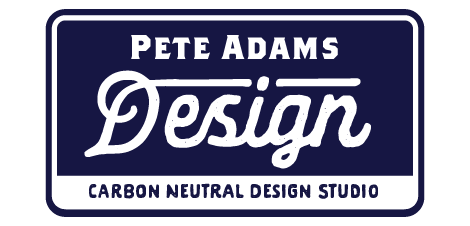How to Get a Unique Logo that Stands OUT – Building Brands
Your Logo is the visual identity of your brand, and your brand is the cornerstone of your business. It’s what occupies space in your customers minds, and what defines you.
All companies have a logo. Even if you just write your company name in the default font in Microsoft Word for a letterhead, you have a logo. This means it can be very easy and quick to make a logo, but that doesn’t mean it’s a good logo. If you don't put effort into creating your logo, it shows, and your customers will believe your product lacks the same care and value. If you don’t create your brand, your customers will decide on it for you.
This is why it is important to work with an experienced, professional designer when branding your new company. A professional logo design experience will be a process, working on your unique business needs and visual goals, creating a unique, and own able cornerstone in peoples minds.
A good designer can help make the right choices over which aspects of the brand will be the most crucial in breaking through to the customer and creating a deep and authentic relationship. Born out of interesting and innovative ideas a brand must take into account the cultural meanings of the product, the current status of the world, and why the world needs the brand. Showing what the brand means to the world and why it is crafted to help them. This process is a way of creating connections through the products people buy. Helping take the brand story, and letting the customers identify themselves with it.
A brief overview of the process involves these main stages:
Questions, Archetypes & Strategy - Creating a mission statement and strategy for the company so as to understand the market and future for the brand as well as the influences and story behind the brand. Finding the brand archetype is an important part of the process. These archetypes build the foundation of the stories we use to bring meaning to events. When a brand relates to an archetype, it becomes instantly recognisable and familiar to customers. This helps build trust and a connection with the brand.
Research & Concepts - Exploring a range of potential avenues to go down, researching the industry as well as out of the box thinking with completely unrelated industries who have approached similar problems. These then get funnelled into initial concepts for development.
Concept Development - Refining the best concept, and working through layouts, uses and sizes. Ensuring the logo accurately reflects the brands direction and is a unique, intelligent idea. (I love working with custom hand drawn logos because you can add personality that is impossible to get by just choosing a font from a computer. Creating something custom and unique is a huge advantage over just being another standard typeface in the world.)
Refinements - Once the final logo is decided it comes down to details. In this final stage of development the logo is crafted under a microscope. Scratching back small areas, and chiseling a masterpiece. It’s the small changes here that turn a great logo into a piece or artistic perfection.
File Delivery - The final stage. The logo is all drawn up and refined. Colours are chosen. Now the files are created with Print Ready (CMYK, 300 Dpi) images and vectors and then the Digital Res (72 Dpi, RGB) versions in a range of formats and vector files.
From here the brand is in your hand, but I wouldn’t forget about your designer yet. The brand roll out and how it gets used is very important. Asking the Designer to create a Brand Guidelines document is a great way to get to know your new brand and how to use the logo.


